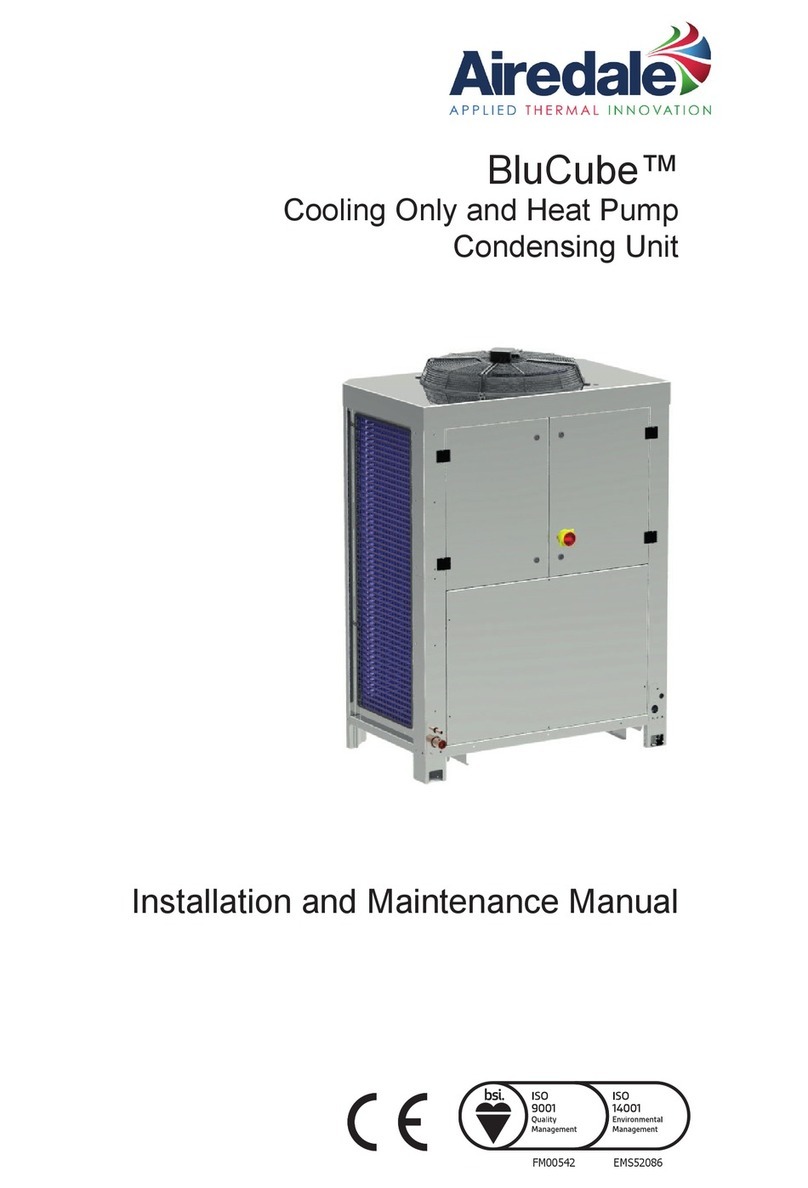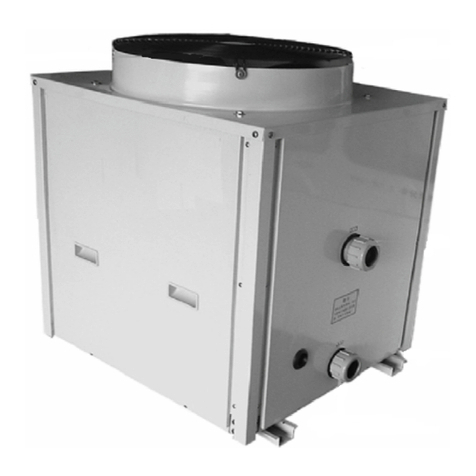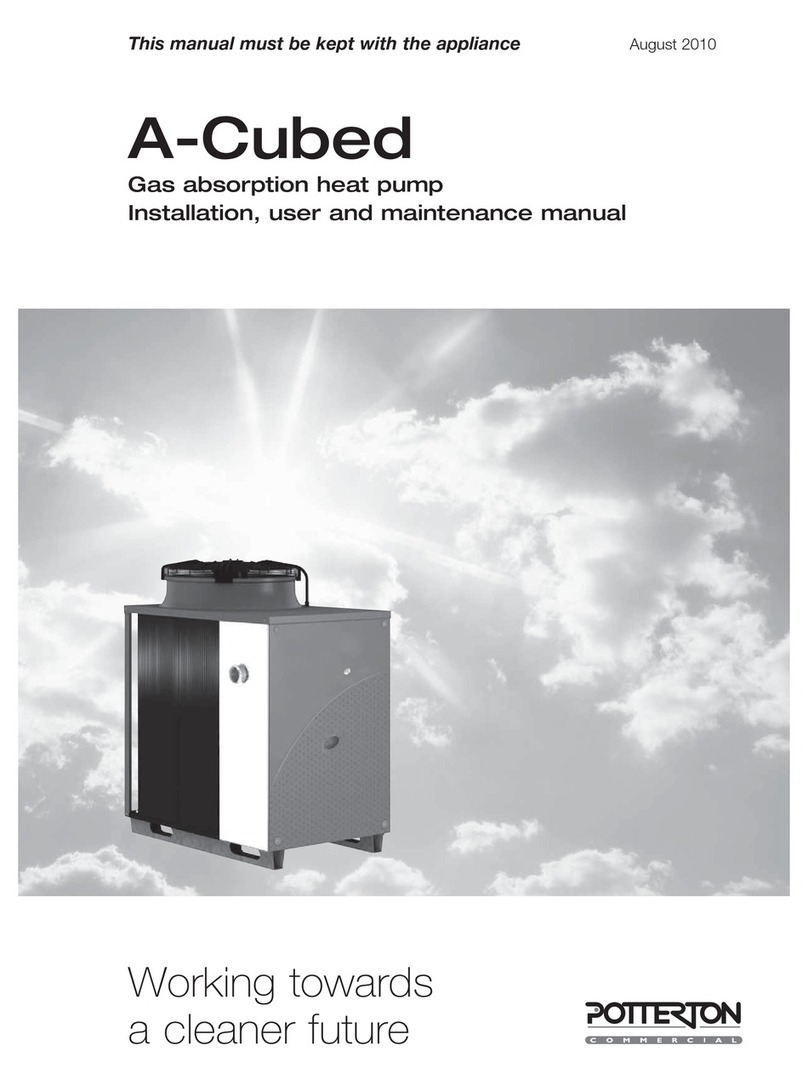
POTTERTON COMMERCIAL PRODUCTS DIVISION SECTION 3
INSTALLATION, OPERATION AND MAINTENANCE MANUAL
DERWENT COMPACT PLUS - CONDENSING PAGE 7
The boilers MUST NOT be fired under any
circumstances with less than the minimum water
flow.
On systems with variable flow rates due to flow
reducing devices, ie. TRVs, zone valves, etc, or
where the minimum heat demand, ie. summer
domestic hot water load, does not achieve the
minimum boiler flow rate then consideration shall be
given to incorporating a primary loop system. For
further information see Potterton Publication
Technical Bulletin No.1 Issue 2.
It is recommended that the system is designed to
give a constant flow rate. For further information on
water circulation systems see Potterton publication
Technical Bulletin No.1 and Technical Bulletin No.3
current issue.
BOILER PROTECTION
The provision of pump overrun by a time delay relay
or a thermostat situated in the flow pipe close to the
boiler is essential to remove residual heat from the
boiler.
The boiler and system should be protected by
suitable frost thermostats.
Never fill a hot boiler with cold water. Sudden
cooling may cause the cast iron to fracture under
the stress.
Unions and isolating valves should be fitted to the
flow and return manifolds so that the boiler can be
isolated from the system if the need arises.
SYSTEM WATER QUALITY
Boiler systems require the system water to be
controlled by the use of inhibitors to maintain a
neutral pH and inhibit corrosion. The system pH
should be controlled between 7 and 8. On systems
with Aluminium components a pH above 8.4 can
cause failure of the Aluminium. The water system
must be free of leaks to prevent raw water make up,
which will dilute any inhibitors, promote corrosion and
form lime scale.
The system water should be checked as part of a
maintenance programme as a minimum on an annual
basis to ensure that corrosion inhibitors and pH are
adequate for continued protection.
Existing Systems
On existing systems where boilers are being replaced
due to failure then the cause should be investigated
before installing new boilers. This can normally be
achieved by cutting open a failed boiler section and
examination for system debris or contamination.
Lime scale is a positive indicator of continuous
system water make up due to water loss. Evidence of
magnetite (black sludge) in the system and the
formation of gas in radiators causing air locking is a
positive indicator of corrosion.
Where an old system shows evidence of
contamination then system cleaning should be
carried out before installation of new boilers. The
heating system should be chemically flushed to
remove any lime scale or corrosion and a corrosion
and lime scale inhibitor added. Lime scale descalers
if incorrectly used could cause any remaining system
debris to continue to breakdown and contaminate the
new boiler causing boiler failure.
Advice on system cleaning and suitable products
should be sought from specialist suppliers of system
cleaners such as Fernox or Sentinel.
It is important to note that corrosion inhibitor can only
be used in an attempt to prevent corrosion from
occurring, where a system has an existing corrosion
problem, inhibitors will be ineffective and the system
requires cleaning.
On existing systems where comprehensive descaling
and desludging cannot be carried out then
consideration should be given to separating the new
boiler system from the existing system pipe work by
the use of plate heat exchangers.
New Systems
New pipe work systems should be thoroughly flushed
with a suitable cleaning agent to remove debris and
flux residues before filling. The system water should
be dosed with a suitable corrosion and lime scale
inhibitor.
SEALED SYSTEMS
General
Potterton Commercial boilers are suitable for use on
sealed systems designed in accordance with BS
6644: 1991 and BS 6880 Part 2. In addition,
reference should be made to the Health & Safety
Executive guidance note PM5 "Automatically
Controlled Steam & Hot Water Boilers".
Noise Level
Derwent Compact Plus Condensing boilers are
regarded as being ‘commercially quiet’, ie < NR63
under typical operating conditions.




























